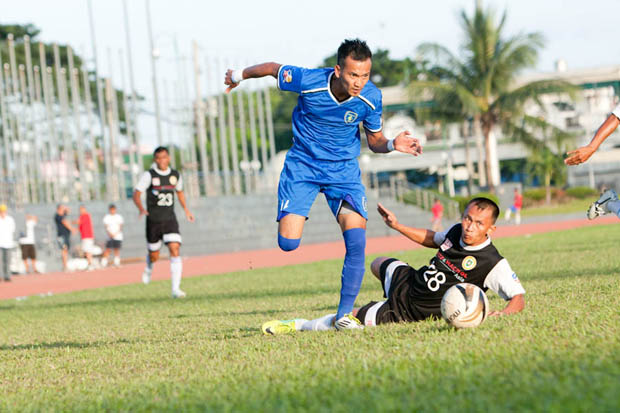
Gearing up. The UFL Cup hosts an array of football talent, including UAAP 73 rookie of the year, Gerardo Valmayor of Diliman FC. Photo by Mario T. Dagdag
The Philippine Premier League—where footballers are idolized by the youth, where jam-packed stadiums echo of chants cheering on teams, where weekend derbies, Boxing Day, and cup finals exist.
The reality is not as farfetched as one might expect.
After signing a reported P150-million, five-year television deal with AKTV/TV5 last September 16, the United Football League (UFL) has made its official debut on TV screens nationwide, legitimizing football’s inception into the Philippine mainstream. The deal transformed what started out as a weekend kick-around to a semi-professional league, with blueprints of becoming the Philippines’ first ever professional football league.
“This is the first time in our country’s football history that you have an eight month long football tournament,” says UFL president and former Blue Booter, Randy Roxas.
United Football League
Unknown by many, the UFL has actually been around for nine years. “It was organized so that [clubs] could have regular weekend tournaments,” Roxas says.
It initially consisted of alumni teams from San Beda, Ateneo, La Salle, UP and Silliman University. Soon, other teams such as Nomads, Kaya, Pachanga, and the Philippine Air Force, Army and Navy joined.
“There was hardly any marketing nor corporate involvement, and the number of games were limited,” Roxas says. What advertisers were after was television airtime. In its earlier days, the UFL wasn’t broadcasted on television, prompting sponsors to withdraw from the league and invest in ventures such as the PBA, which is televised nationally.
As years passed, the UFL elevated its level of competition; teams would vie for the best lineup, recruiting and bidding for players. Then, three years ago, the UFL took a big step forward when Football Alliance, a company run by top businessmen, took over the management and marketing of the UFL, with the goal of developing a competitive, two-division, domestic premier league. The goal was actualized, and the inaugural season kicked off in 2009.
Unexpected turn of events
In December 2010, the fledgling semi-pro league was abruptly ushered into the spotlight. The reason: the Azkals. The unexpected run of form saw the Azkals upset defending champions and co-host Vietnam in the Asian Football Federation (AFF) Suzuki Cup, giving them a semifinals berth.
“The Azkals launched the UFL into a bigger fanbase,” comments Rick Olivares, sports journalist and UFL commentator for AKTV. “Their overnight success took the UFL along with it.”
Because of 90 brilliant minutes of football, the Azkals received attention that it never had before. Their once empty matches saw game attendance spike, with game results finding their way into Philippine news headlines due to the heightened interest. Overnight, their popularity catapulted football’s exposure in the country.
The Azkals, which was made up of several half-Filipinos, consisted of players who played their club football in the UFL.
“Without the UFL, locally bred superstars such as Chieffy Caligdong and Ian Araneta would not have performed the way they did in the international arena,” says Roxas.
Present-day UFL
Now in its third season, the league has evolved into the country’s premier football tournament. Games are televised, and have garnered an increasing fanbase. Venues have improved, especially since the reopening of the 12,873-seater Rizal Memorial Stadium. Apart from the 16 founding clubs that joined the inaugural season in 2009, several teams have since set up base, bringing the total to 28.
Among the teams are some that stand above the rest. Kaya Cignal FC and Nomads Auction Manila FC are two that have established themselves over the years.
Kaya FC was established in 1996 and has produced players who have gone on to play for the Azkals, namely national team captain Ally Borromeo and Anton del Rosario. Nomads FC is the oldest football club in the country, founded in 1914 by expatriates and is still mostly composed of foreigners.
Bringing stiff competition are teams like the Philippine Air Force FC, the first and thus far only champions, having won the first two seasons of the UFL. Global Smartmatic FC houses Azkals’ forward Angel Guirado, and the Loyola Meralco Sparks FC is composed of the Younghusbands, the Hartmann brothers and former Blue Booter Pat Ozaeta.
Semi-pro
Despite inking a television deal, however, the UFL remains to be of semi-professional status. Olivares says, “Everyone in the UFL has [day] jobs, except the national players. It’s not at a point where people are paid really well yet.”
“There are [only a] few teams that are well-funded,” he adds. The disparities in pay range from 500 pesos a game to 150,000 pesos a month.
The recent surge of companies acquiring UFL teams, however, indicates an evolvement towards a professional league likened to the PBA. In September 2011, businessman Manuel V. Pangilinan, who maintains two teams in the PBA (Talk N’ Text and Meralco) and one in the Shakey’s V-League (Maynilad), acquired the Loyola Agila FC, now fielded as the Loyola Meralco Sparks. Other business tycoons have followed suit: Diliman FC is backed by Victory Liner, while Olivares says, “Kaya FC is [also] bankrolled by Pangilinan [and] Pachanga FC is owned by Freddie Gonzales.”
Aside from the increasing corporate interest, the league is on its way to being accredited. “We are working with the Philippine Football Federation (PFF) in getting the UFL recognized in the AFC and AFF sanctioned club tournaments, so that our club champion can challenge the champions of the other leagues in the Asean region,” he says.
Another major step is the development of the grassroots program; some UFL clubs have developed youth programs to expand their talent pool of players for the next generation.
UFL’s future
In the past, leagues such as the Philippine Football Federation Open Championship, the Filipino Premier League and La Liga have attempted to reach professional status. On average, these leagues only lasted for a year, with financial difficulties hindering its sustainability. With a dampened history on its side, it’s tempting to speculate whether the UFL would eventually follow the same fate. But Olivares contends: “There’s money now. It’s a growing league. It’s not easy, but they’re on the right track.”
The UFL has a bright future ahead. If popularity continues to grow and people start believing in its success, we might just be looking at the Philippines’ first successful football league. “At least now, all our young footballers have something to aspire for after their playing days at school,” Roxas says.
With reports from Angelica P. Lim

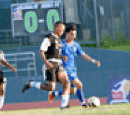
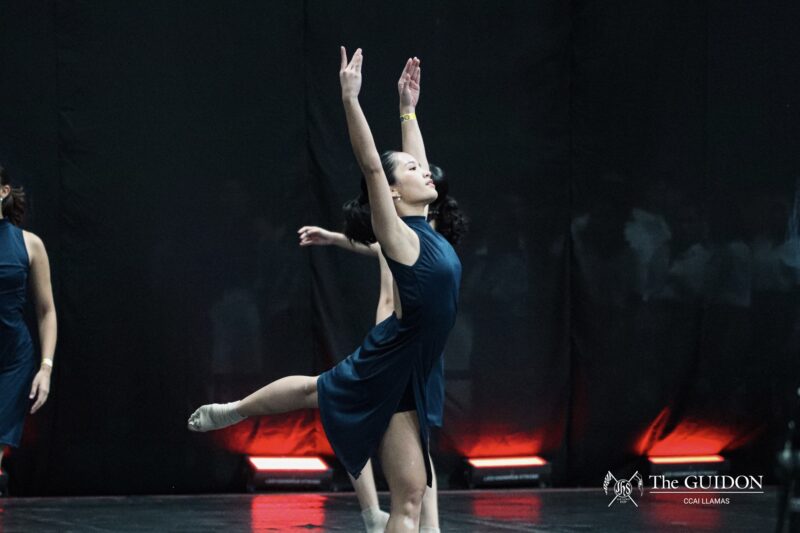
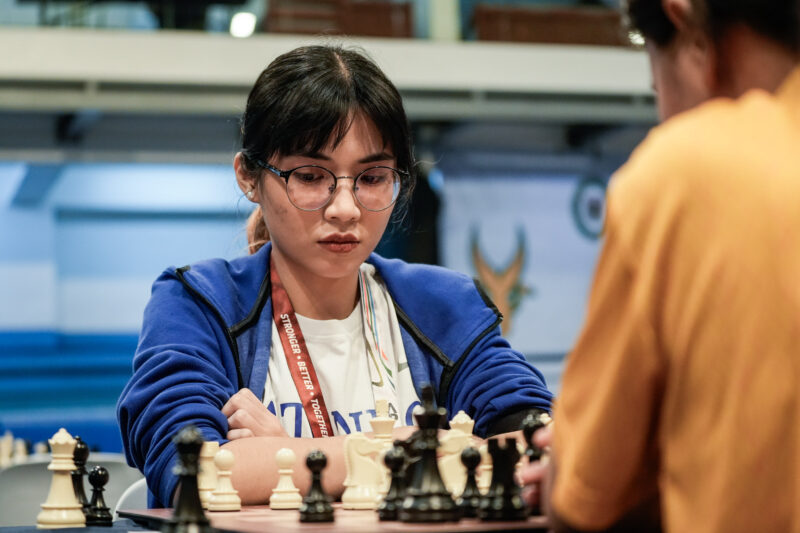
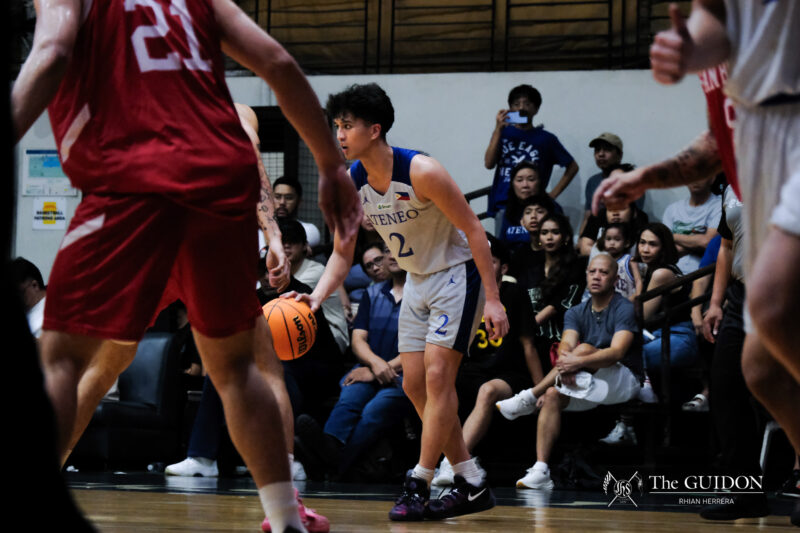
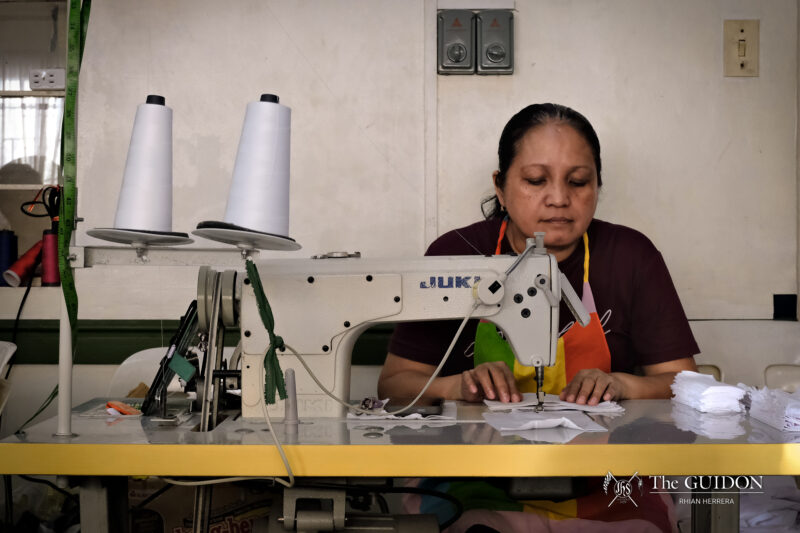


[…] This piece was first published in the November issue of The GUIDON, and can be accessed on The GUIDON online […]
[…] posted by The Guidon on Dec. 6, […]